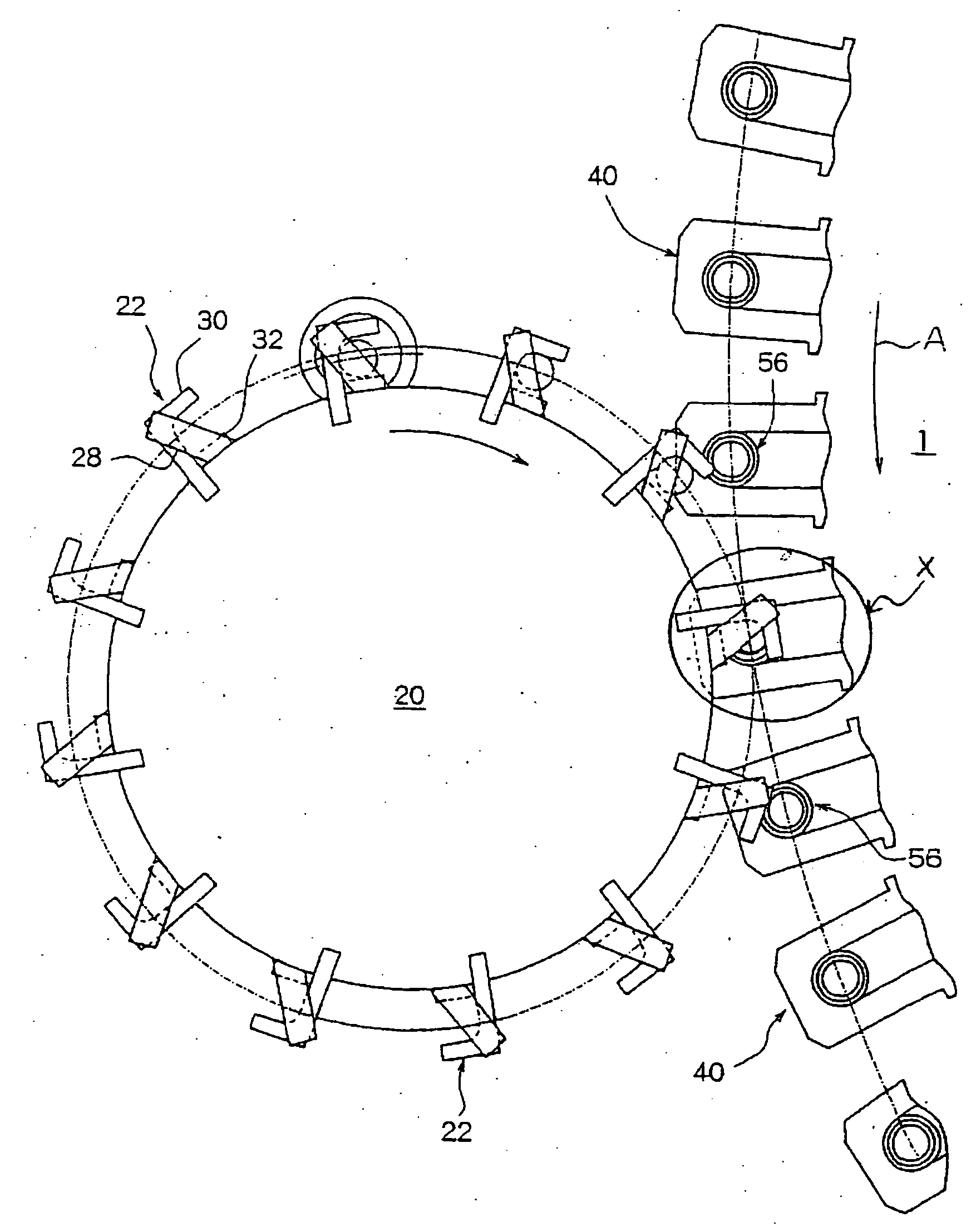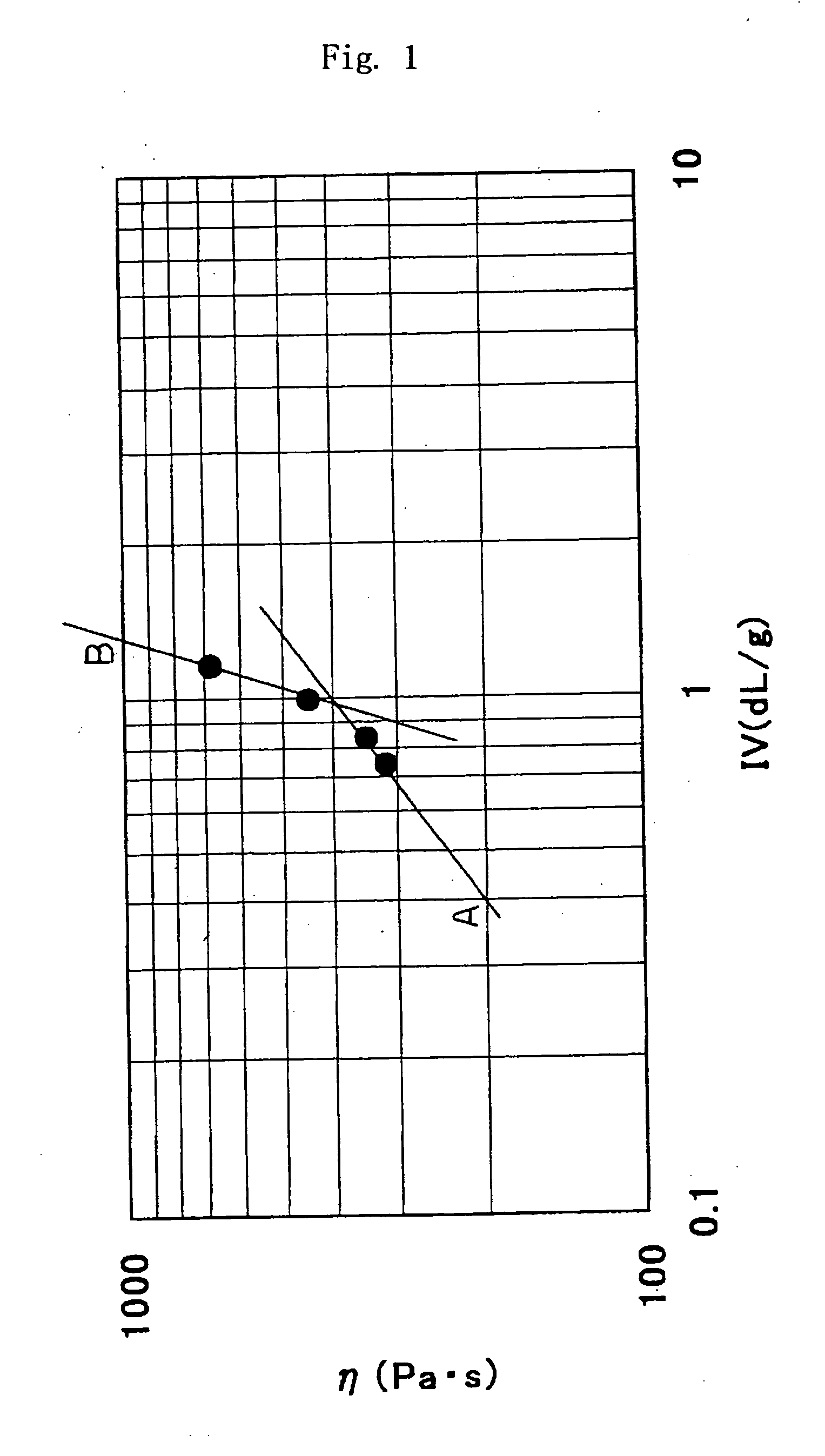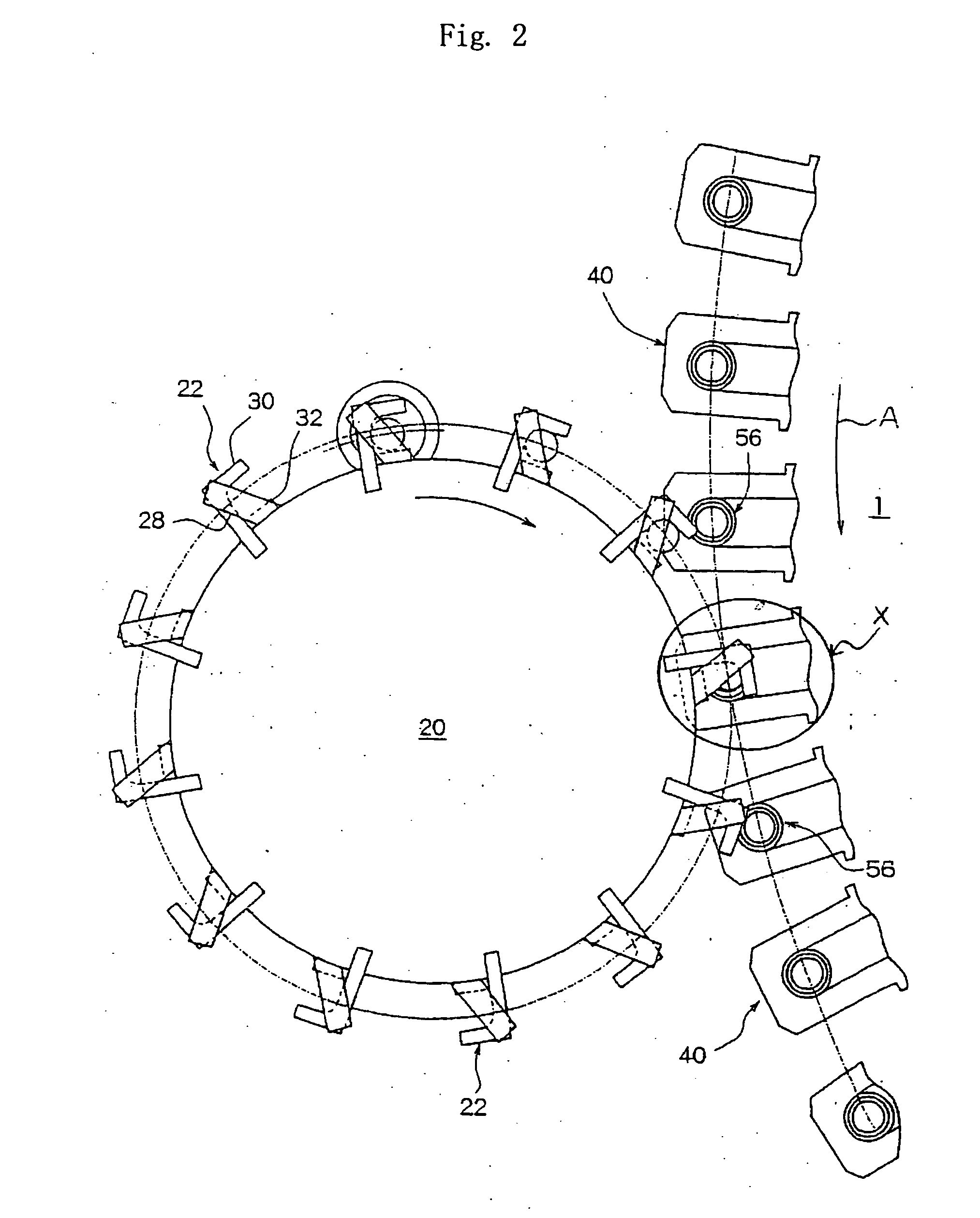Polyester Resin for Compression Forming, Method of Producing the Same and Method of Producing Preforms
a polymer resin and compression forming technology, applied in the field of polymer resin for compression forming, can solve the problem that the molten resin cannot be reliably fed to the compression forming machine, and achieve the effects of low intrinsic viscosity, high intrinsic viscosity, and low intrinsic viscosity
- Summary
- Abstract
- Description
- Claims
- Application Information
AI Technical Summary
Benefits of technology
Problems solved by technology
Method used
Image
Examples
example 1
[0100] A PET resin A having an intrinsic viscosity of 0.62 dL / g and a molecular weight distribution (Mz / Mn) of 3.17, and a PET resin B having an intrinsic viscosity of 1.16 dL / g and a molecular weight distribution (Mz / Mn) of 2.93 were dried at 150° C. for 4 hours. Thereafter, the PET resin A and the PET resin B were dry-blended at a ratio of 70:30. The blended resin was melt-kneaded by using a biaxial extruder and was melt-extruded at an extrusion temperature of 270° C. By using a melt resin feeding device shown in FIGS. 2 and 3, molten resin masses each in an amount of 25 g were fed to the compression forming machine at a rate of 200 masses a minute to continuously form preforms for 2 hours while observing deposition on the holder and on the throat, variation in the timing of fall of the molten resin mass, draw-down and shaping.
[0101] Further, the blended resin and the preform were measured for their intrinsic viscosities, molecular weight distributions (Mz / Mn), DEG contents, cont...
examples 2 to 9
[0102] Preforms were formed in the same manner as in Example 1 but varying the polyester resins A and B or the blending ratio thereof. The blended resins and the preforms were measured for their intrinsic viscosities, molecular weight distributions (Mz / Mn), DEG contents, contents (% by weight) of the components having molecular weights of not smaller than the inter-tangling-point polymerization degree and contents (% by weight) of the components having molecular weights of 500 to 2000 in the same manner as in Example 1. The results were as shown in Tables 1 and 2.
PUM
| Property | Measurement | Unit |
|---|---|---|
| molecular weight distribution | aaaaa | aaaaa |
| molecular weight distribution | aaaaa | aaaaa |
| molecular weight distribution | aaaaa | aaaaa |
Abstract
Description
Claims
Application Information
 Login to View More
Login to View More - R&D
- Intellectual Property
- Life Sciences
- Materials
- Tech Scout
- Unparalleled Data Quality
- Higher Quality Content
- 60% Fewer Hallucinations
Browse by: Latest US Patents, China's latest patents, Technical Efficacy Thesaurus, Application Domain, Technology Topic, Popular Technical Reports.
© 2025 PatSnap. All rights reserved.Legal|Privacy policy|Modern Slavery Act Transparency Statement|Sitemap|About US| Contact US: help@patsnap.com



